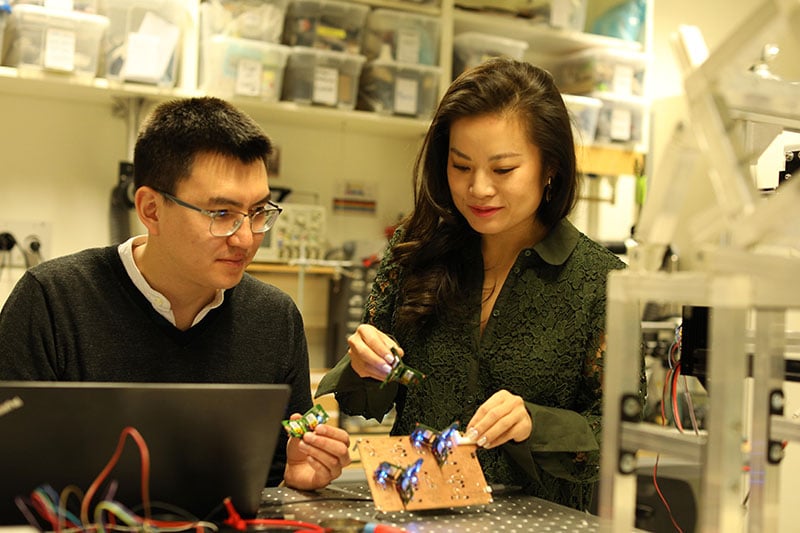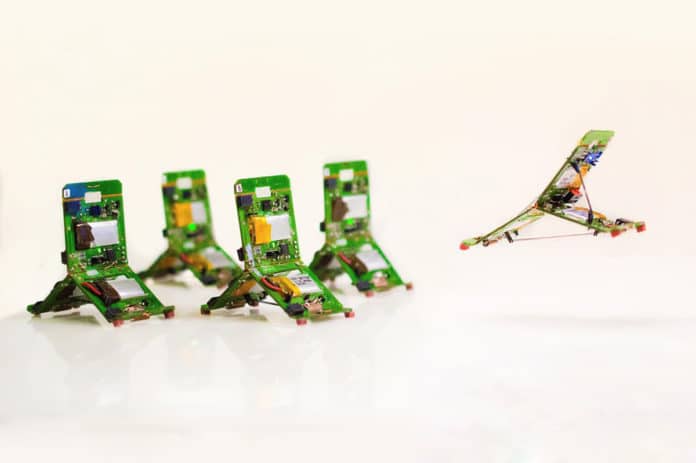Robots have traditionally been humanoid in form, but we have also seen many robots that aren’t human-designed. For years, researchers have been experimenting with robotic forms that look more like insects, birds, and are flexible like a leech and many more. This kind of insect-inspired robot could be useful in various rescue and research operations.
Now, a team of EPFL researchers has developed robots inspired by ants that look like nothing more than a walking circuit board. These are three-legged, T-shaped origami robots and hence the researchers call their creation “Tribots.”
Despite being small in size, simple in design and weighing just 10 grams, each robot has multiple locomotion modes to navigate any surface. Besides, being able to communicate and act collectively, they can quickly detect and overcome obstacles and move objects much larger and heavier than themselves.

The robots look like a tiny circuit board with some significant additions to the circuitry, like a small lithium polymer battery that powers all its motions and circuits.
Tribots take only a few minutes to assemble by folding a stack of thin, multi-material sheets, making them suitable for mass production. Unlike Bee+ – a tiny four-winged insect-like flying robot, Tribots are entirely untethered. These fully autonomous robots are equipped with infrared and proximity sensors for detection and communication purposes. Also, more sensors can be added depending on the application.
“Their movements are modeled on those of Odontomachus ants. These insects normally crawl, but to escape a predator, they snap their powerful jaws together to jump from leaf to leaf,” says Zhenishbek Zhakypov, the first author.

The tiny ant-inspired robot combines multiple shape-memory alloy actuators, which enables it to perform five different locomotion gaits – vertical jumping, horizontal jumping, somersaulting to clear obstacles, walking on textured terrain and crawling on flat surfaces.
Despite having the same structure, each robot is assigned a specific role depending on the situation. The ‘explorers’ detect physical obstacles in their path and inform the rest of the group. The ‘leaders,’ then’ give the information, while the ‘workers,’ meanwhile, pool their strength to move objects.
“Each Tribot, just like Odontomachus ants, can have different roles. However, they can also take on new roles instantaneously when faced with a new mission or an unknown environment, or even when other members get lost. This goes beyond what the real ants can do,” says Paik.
In the future, Tribots can be deployed jointly in practical situations like an emergency search mission. They could locate a target quickly over a large surface without relying on GPS or visual feedback, all thanks to thanks to their multi-locomotive and multi-agent communication capabilities.
“With their unique collective intelligence, our tiny robots can demonstrate better adaptability to unknown environments; therefore, for certain missions, they would outperform larger, more powerful robots,” adds Paik.
Their research is published in Nature.
